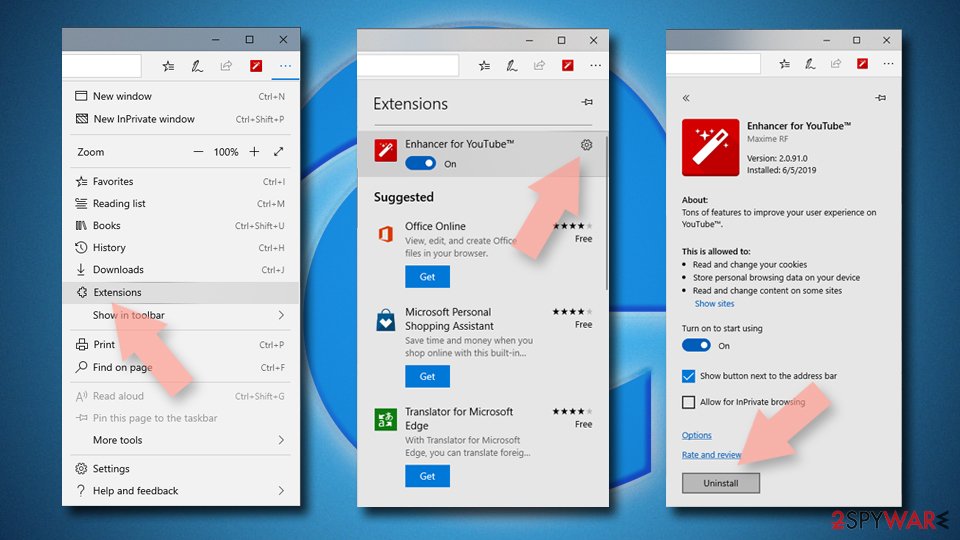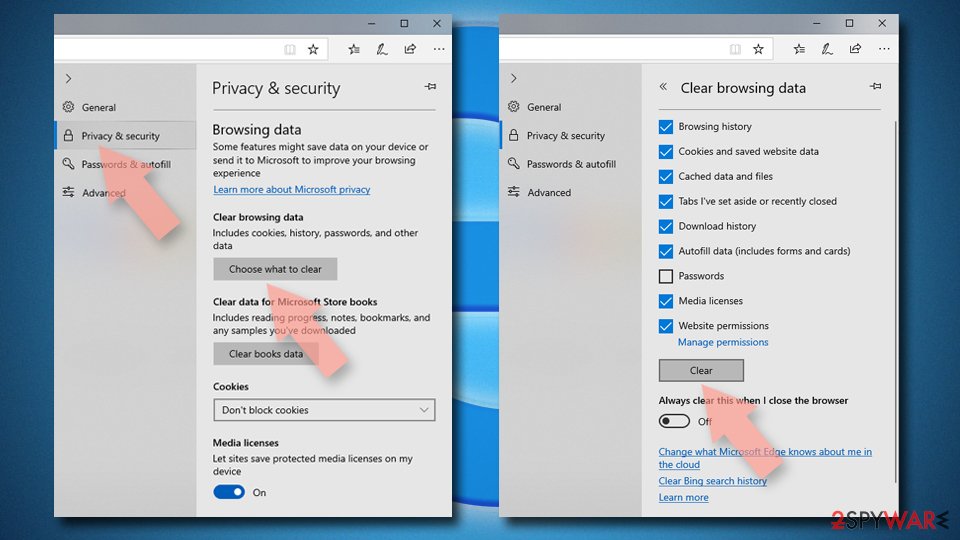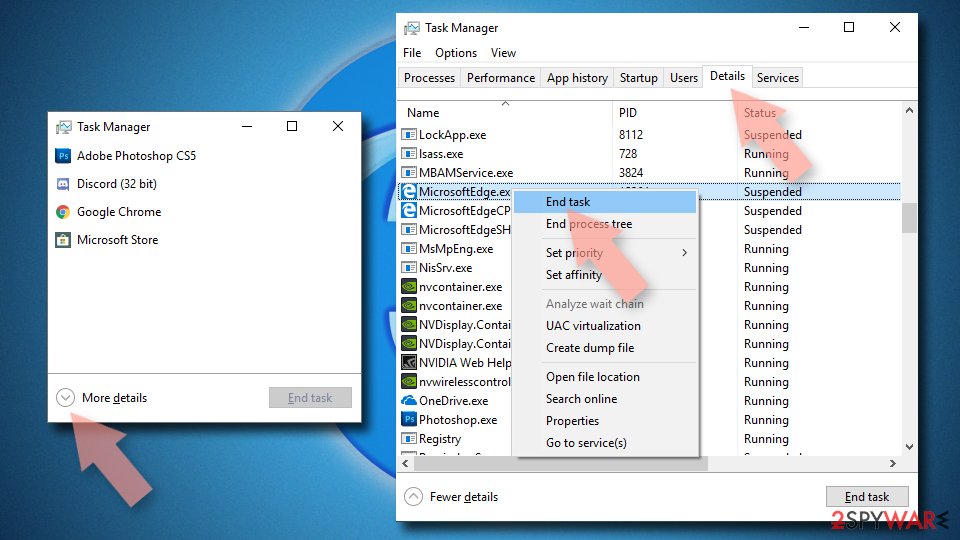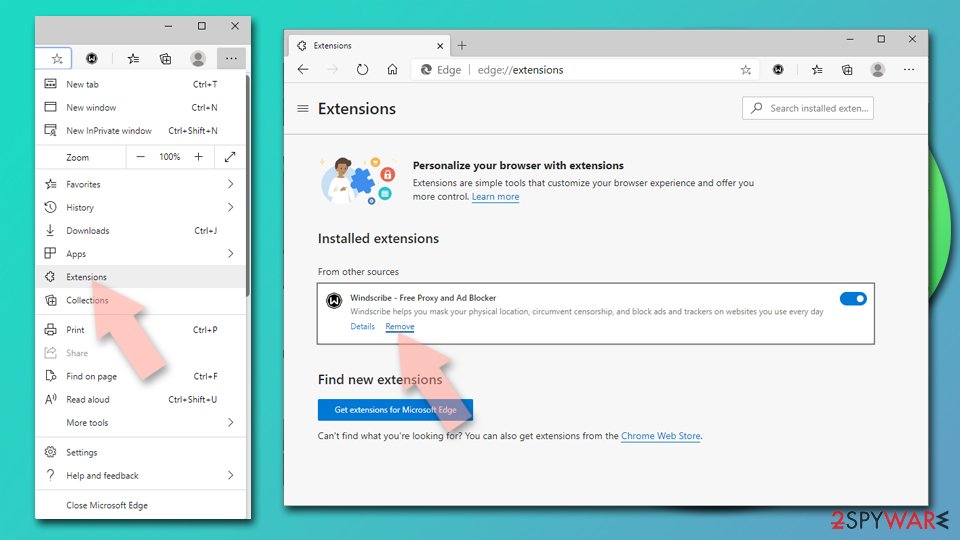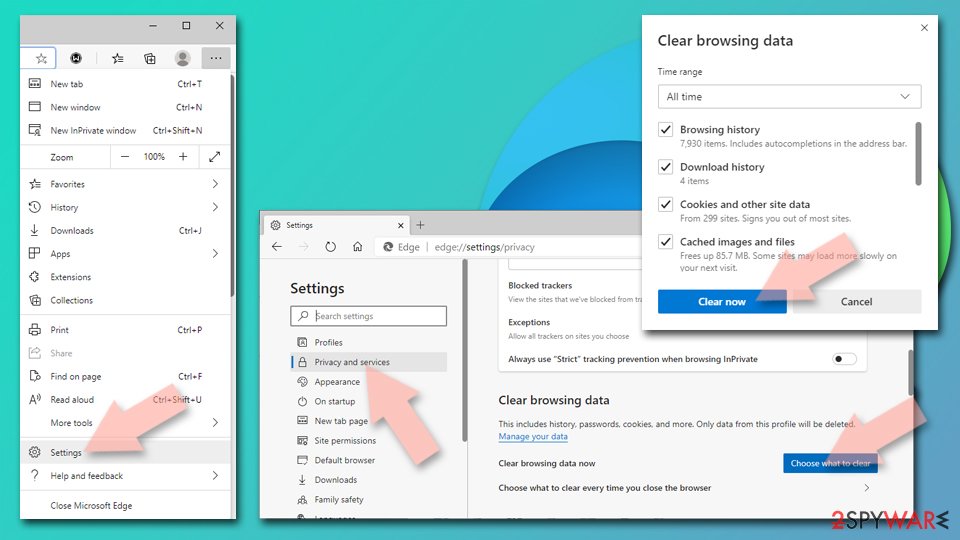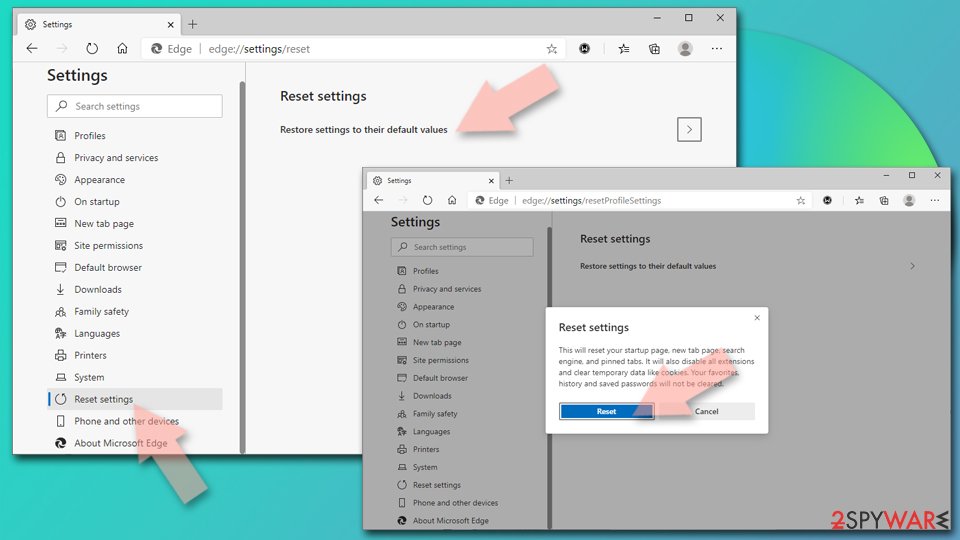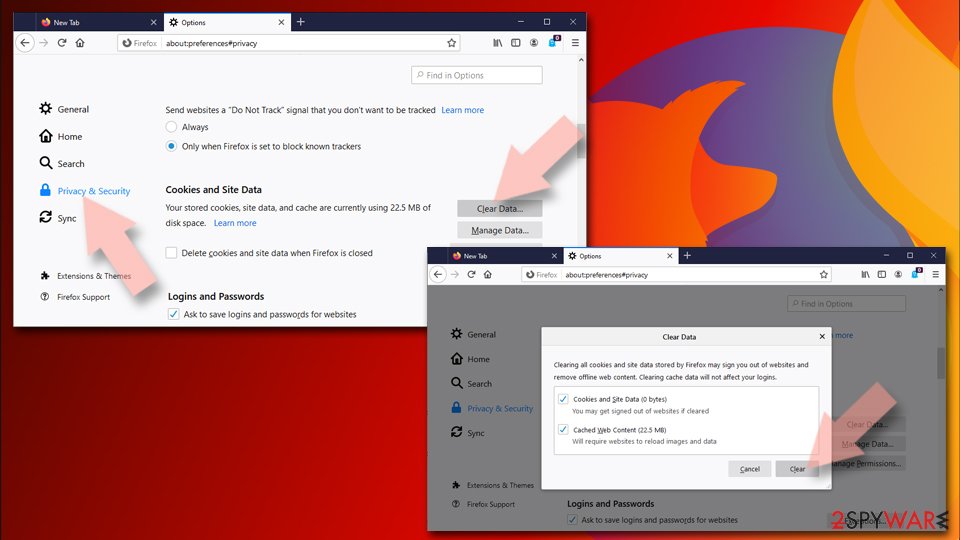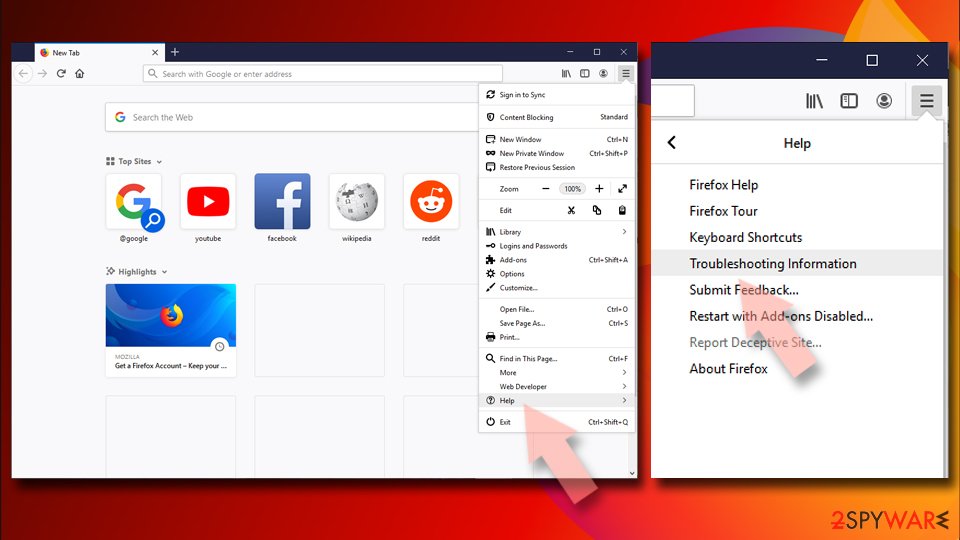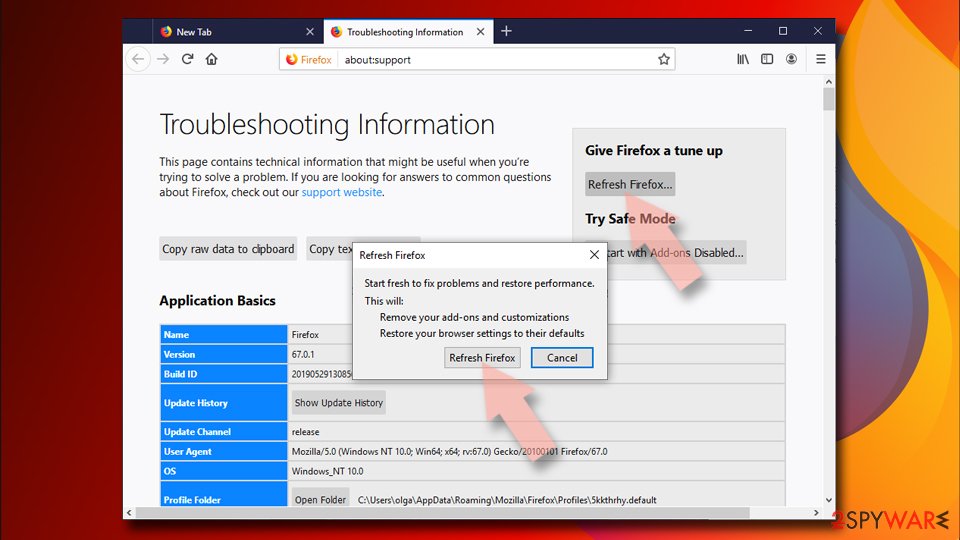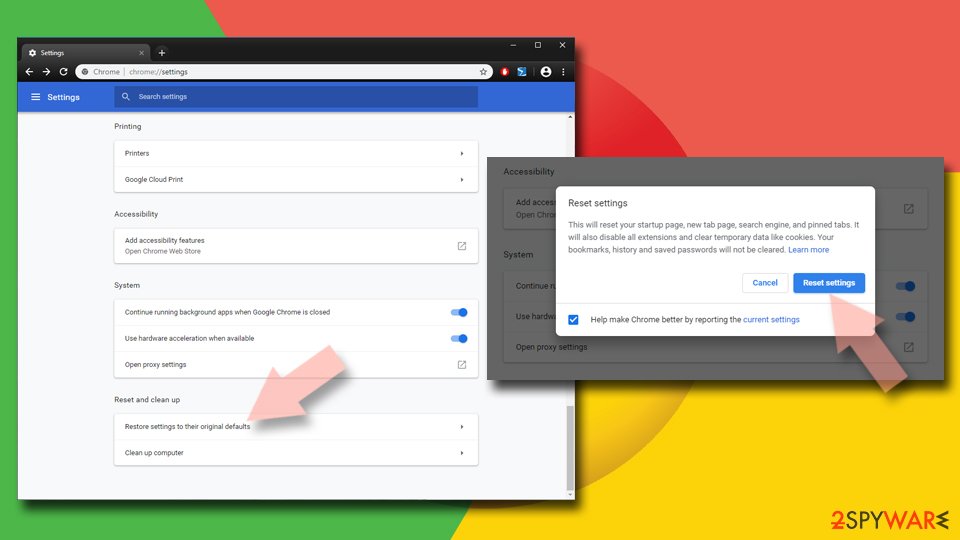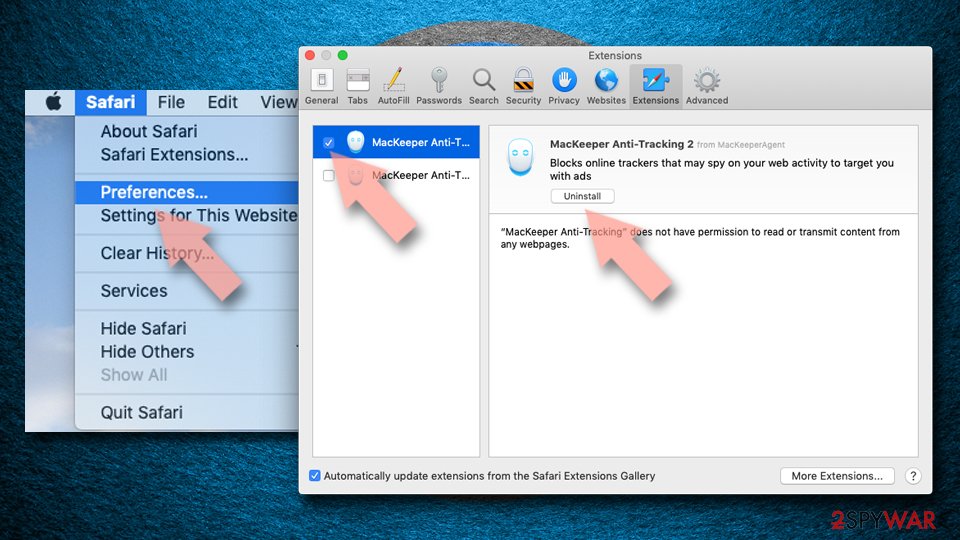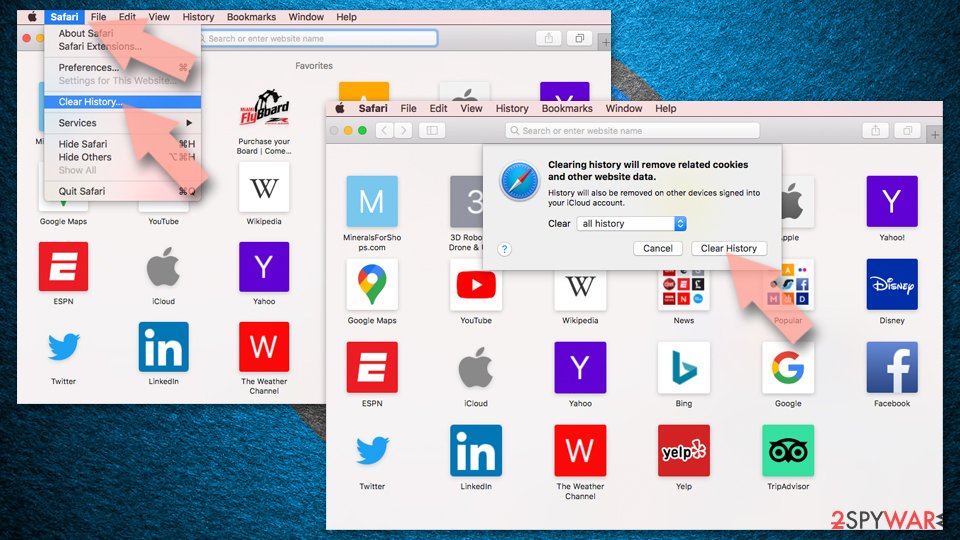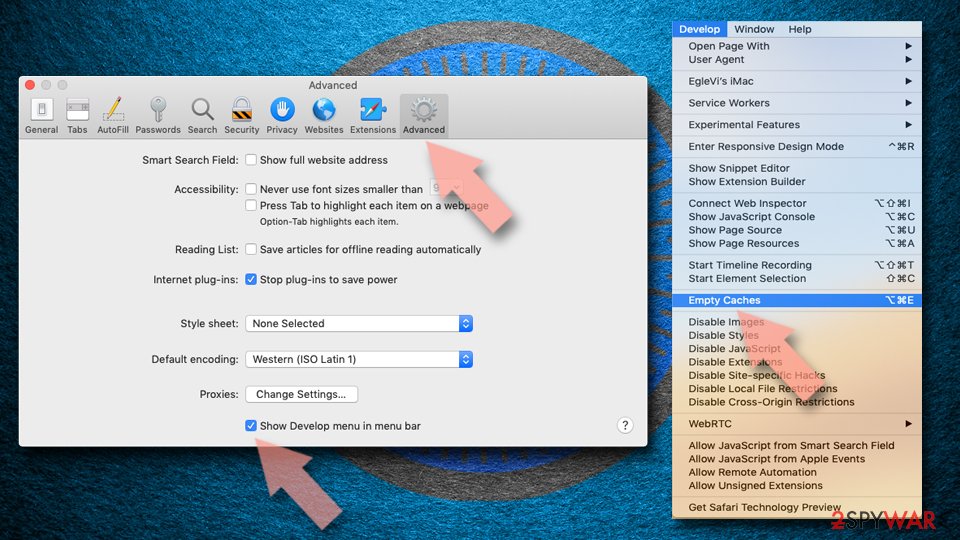UltraWebFormat (Simple Removal Guide)
UltraWebFormat Removal Guide
What is UltraWebFormat?
UltraWebFormat – a PUP that modifies your browser settings and prevents you from changing them back

UltraWebFormat is a browser hijacker that can infect Mac, Windows, and Android devices. As soon as it does, it changes the default search engine, which consequently changes the new tab and homepage preferences. By doing so, the potentially unwanted program[1] (PUP) can redirect all search inquiries through a website of its choice, show altered search results, and cause sudden redirects to affiliated sites.
Moreover, it can collect non-personal information that advertisers usually use to make customized ads specifically for you. The search results from search.yahoo.com are where they will be shown, most likely as recommended searches, but other forms are also possible.
And last but not least, UltraWebFormat browser hijacker adds the “Managed by Your Organization” feature to your Chrome browser, which prevents switching the altered settings back. By reading this article, you'll find out how to restore your browser, clean up the device, and safely get rid of the cyber infection.
| name | UltraWebFormat |
|---|---|
| Type | PUP, redirect virus, browser hijacker |
| Altered browser settings | Default search engine, homepage, new tab |
| Appointed fake search site | search.7ax6.com |
| Additional information | Adds “Managed by Your Organization” to Google Chrome browsers |
| Symptoms | Browser settings are modified; search results are shown from a different search provider; sudden redirects open questionable portals |
| Distribution | Chrome web store, fake Flash Player updates, software bundles |
| elimination | To remove this cyber threat from your device, scan your device with a trustworthy anti-malware tool |
| System health | To ensure that your computer runs smoothly, perform system diagnostics with the FortectIntego tune-up software |
Browser hijackers, such as YourStreamSearch, TikoSearch, and others, aren't as dangerous as malware, but they can still pose threats. First of all, by causing redirects through shady or fake sites, they can gather non-personal information, such as:
- device and browser info,
- geolocation and IP address,
- search inquiries,
- used apps,
- links of visited domains, etc.
But the main problem of having a browser hijacker installed on your device is its shown ads and caused redirects. While the app itself is usually harmless and has no malicious coding, its affiliated sites might have evil intentions and try to lure you into gambling, infect your device with malware, and so on.
Your best defense against dangerous websites, potentially unwanted programs, malware, and other cyber infections is reliable security software such as Malwarebytes or SpyHunter 5Combo Cleaner. You can also remove UltraWebFormat browser hijacker with either of these free anti-malware tools.
You could also uninstall it manually with our guides below, but automatic removal is recommended because it deletes all associated files. Afterward, experts[2] recommend running system diagnostics with the time-proven FortectIntego system optimizer will ensure that your device doesn't exhibit any abnormal behavior, such as BSoDs,[3] freezing, etc.

Don't fall for false advertisement, and don't rush through any new app installation to avoid PUPs
Browser hijackers, adware, and other potentially unwanted programs can be falsely advertised on Google Chrome Web Store and other official marketplaces as useful additions to your device. But they are taken down quite quickly when their nature is realized.
Nonetheless, people have to stay cautious when installing any new software, whether downloaded from a reliable source or not. First of all, when installing a browser extension, please carefully read what it will do to your browser as it's clearly written if it's going to change your browser settings, record/change your data on visited pages, etc.
If you don't agree with anything that it will do to your browser and device, please abort the installation. The same goes when installing software from a bundle. Stay attentive. Choose the Advanced/Custom installation mode and go step-by-step through the installation of every new app. If some look at least a bit suspicious, don't install them. Better yet, get only the app you wanted in the first place, and don't install the rest.
Remove UltraWebFormat browser plugin with anti-malware software
Browser hijackers are often falsely advertised as tools that will improve your safety, privacy, internet speed, or other attributes of your browsing experience. In reality, they do the exact opposite by overloading your internet connection, slowing down your device, and posing threats to privacy and security.
We're not saying that they're malicious, but you should reconsider using them. If you've installed UltraWebFormat browser hijacker and want to remove it, you have two options. For automatic removal, scan your device with an updated and trustworthy anti-malware tool.
To remove this browser hijacker manually, use our guides displayed below. When the PUP is removed, you should consider using a time-tested system diagnostics tool to resolve all system irregularities. Messy system files and settings could lead to BSoDs, severe lag, and other system failures.
You may remove virus damage with a help of FortectIntego. SpyHunter 5Combo Cleaner and Malwarebytes are recommended to detect potentially unwanted programs and viruses with all their files and registry entries that are related to them.
Getting rid of UltraWebFormat. Follow these steps
Uninstall from Windows
Instructions for Windows 10/8 machines:
- Enter Control Panel into Windows search box and hit Enter or click on the search result.
- Under Programs, select Uninstall a program.

- From the list, find the entry of the suspicious program.
- Right-click on the application and select Uninstall.
- If User Account Control shows up, click Yes.
- Wait till uninstallation process is complete and click OK.

If you are Windows 7/XP user, proceed with the following instructions:
- Click on Windows Start > Control Panel located on the right pane (if you are Windows XP user, click on Add/Remove Programs).
- In Control Panel, select Programs > Uninstall a program.

- Pick the unwanted application by clicking on it once.
- At the top, click Uninstall/Change.
- In the confirmation prompt, pick Yes.
- Click OK once the removal process is finished.
Delete from macOS
Remove items from Applications folder:
- From the menu bar, select Go > Applications.
- In the Applications folder, look for all related entries.
- Click on the app and drag it to Trash (or right-click and pick Move to Trash)

To fully remove an unwanted app, you need to access Application Support, LaunchAgents, and LaunchDaemons folders and delete relevant files:
- Select Go > Go to Folder.
- Enter /Library/Application Support and click Go or press Enter.
- In the Application Support folder, look for any dubious entries and then delete them.
- Now enter /Library/LaunchAgents and /Library/LaunchDaemons folders the same way and terminate all the related .plist files.

Remove from Microsoft Edge
Delete unwanted extensions from MS Edge:
- Select Menu (three horizontal dots at the top-right of the browser window) and pick Extensions.
- From the list, pick the extension and click on the Gear icon.
- Click on Uninstall at the bottom.

Clear cookies and other browser data:
- Click on the Menu (three horizontal dots at the top-right of the browser window) and select Privacy & security.
- Under Clear browsing data, pick Choose what to clear.
- Select everything (apart from passwords, although you might want to include Media licenses as well, if applicable) and click on Clear.

Restore new tab and homepage settings:
- Click the menu icon and choose Settings.
- Then find On startup section.
- Click Disable if you found any suspicious domain.
Reset MS Edge if the above steps did not work:
- Press on Ctrl + Shift + Esc to open Task Manager.
- Click on More details arrow at the bottom of the window.
- Select Details tab.
- Now scroll down and locate every entry with Microsoft Edge name in it. Right-click on each of them and select End Task to stop MS Edge from running.

If this solution failed to help you, you need to use an advanced Edge reset method. Note that you need to backup your data before proceeding.
- Find the following folder on your computer: C:\\Users\\%username%\\AppData\\Local\\Packages\\Microsoft.MicrosoftEdge_8wekyb3d8bbwe.
- Press Ctrl + A on your keyboard to select all folders.
- Right-click on them and pick Delete

- Now right-click on the Start button and pick Windows PowerShell (Admin).
- When the new window opens, copy and paste the following command, and then press Enter:
Get-AppXPackage -AllUsers -Name Microsoft.MicrosoftEdge | Foreach {Add-AppxPackage -DisableDevelopmentMode -Register “$($_.InstallLocation)\\AppXManifest.xml” -Verbose

Instructions for Chromium-based Edge
Delete extensions from MS Edge (Chromium):
- Open Edge and click select Settings > Extensions.
- Delete unwanted extensions by clicking Remove.

Clear cache and site data:
- Click on Menu and go to Settings.
- Select Privacy, search and services.
- Under Clear browsing data, pick Choose what to clear.
- Under Time range, pick All time.
- Select Clear now.

Reset Chromium-based MS Edge:
- Click on Menu and select Settings.
- On the left side, pick Reset settings.
- Select Restore settings to their default values.
- Confirm with Reset.

Remove from Mozilla Firefox (FF)
Remove dangerous extensions:
- Open Mozilla Firefox browser and click on the Menu (three horizontal lines at the top-right of the window).
- Select Add-ons.
- In here, select unwanted plugin and click Remove.

Reset the homepage:
- Click three horizontal lines at the top right corner to open the menu.
- Choose Options.
- Under Home options, enter your preferred site that will open every time you newly open the Mozilla Firefox.
Clear cookies and site data:
- Click Menu and pick Settings.
- Go to Privacy & Security section.
- Scroll down to locate Cookies and Site Data.
- Click on Clear Data…
- Select Cookies and Site Data, as well as Cached Web Content and press Clear.

Reset Mozilla Firefox
If clearing the browser as explained above did not help, reset Mozilla Firefox:
- Open Mozilla Firefox browser and click the Menu.
- Go to Help and then choose Troubleshooting Information.

- Under Give Firefox a tune up section, click on Refresh Firefox…
- Once the pop-up shows up, confirm the action by pressing on Refresh Firefox.

Remove from Google Chrome
Delete malicious extensions from Google Chrome:
- Open Google Chrome, click on the Menu (three vertical dots at the top-right corner) and select More tools > Extensions.
- In the newly opened window, you will see all the installed extensions. Uninstall all the suspicious plugins that might be related to the unwanted program by clicking Remove.

Clear cache and web data from Chrome:
- Click on Menu and pick Settings.
- Under Privacy and security, select Clear browsing data.
- Select Browsing history, Cookies and other site data, as well as Cached images and files.
- Click Clear data.

Change your homepage:
- Click menu and choose Settings.
- Look for a suspicious site in the On startup section.
- Click on Open a specific or set of pages and click on three dots to find the Remove option.
Reset Google Chrome:
If the previous methods did not help you, reset Google Chrome to eliminate all the unwanted components:
- Click on Menu and select Settings.
- In the Settings, scroll down and click Advanced.
- Scroll down and locate Reset and clean up section.
- Now click Restore settings to their original defaults.
- Confirm with Reset settings.

Delete from Safari
Remove unwanted extensions from Safari:
- Click Safari > Preferences…
- In the new window, pick Extensions.
- Select the unwanted extension and select Uninstall.

Clear cookies and other website data from Safari:
- Click Safari > Clear History…
- From the drop-down menu under Clear, pick all history.
- Confirm with Clear History.

Reset Safari if the above-mentioned steps did not help you:
- Click Safari > Preferences…
- Go to Advanced tab.
- Tick the Show Develop menu in menu bar.
- From the menu bar, click Develop, and then select Empty Caches.

After uninstalling this potentially unwanted program (PUP) and fixing each of your web browsers, we recommend you to scan your PC system with a reputable anti-spyware. This will help you to get rid of UltraWebFormat registry traces and will also identify related parasites or possible malware infections on your computer. For that you can use our top-rated malware remover: FortectIntego, SpyHunter 5Combo Cleaner or Malwarebytes.
How to prevent from getting browser hijacker
Stream videos without limitations, no matter where you are
There are multiple parties that could find out almost anything about you by checking your online activity. While this is highly unlikely, advertisers and tech companies are constantly tracking you online. The first step to privacy should be a secure browser that focuses on tracker reduction to a minimum.
Even if you employ a secure browser, you will not be able to access websites that are restricted due to local government laws or other reasons. In other words, you may not be able to stream Disney+ or US-based Netflix in some countries. To bypass these restrictions, you can employ a powerful Private Internet Access VPN, which provides dedicated servers for torrenting and streaming, not slowing you down in the process.
Data backups are important – recover your lost files
Ransomware is one of the biggest threats to personal data. Once it is executed on a machine, it launches a sophisticated encryption algorithm that locks all your files, although it does not destroy them. The most common misconception is that anti-malware software can return files to their previous states. This is not true, however, and data remains locked after the malicious payload is deleted.
While regular data backups are the only secure method to recover your files after a ransomware attack, tools such as Data Recovery Pro can also be effective and restore at least some of your lost data.
- ^ Potentially unwanted program. Wikipedia. The free encyclopedia.
- ^ Usunwirusa. Usunwirusa. Spyware news and security.
- ^ Blue Screen of Death (BSoD). Techopedia. Professional it insights.





